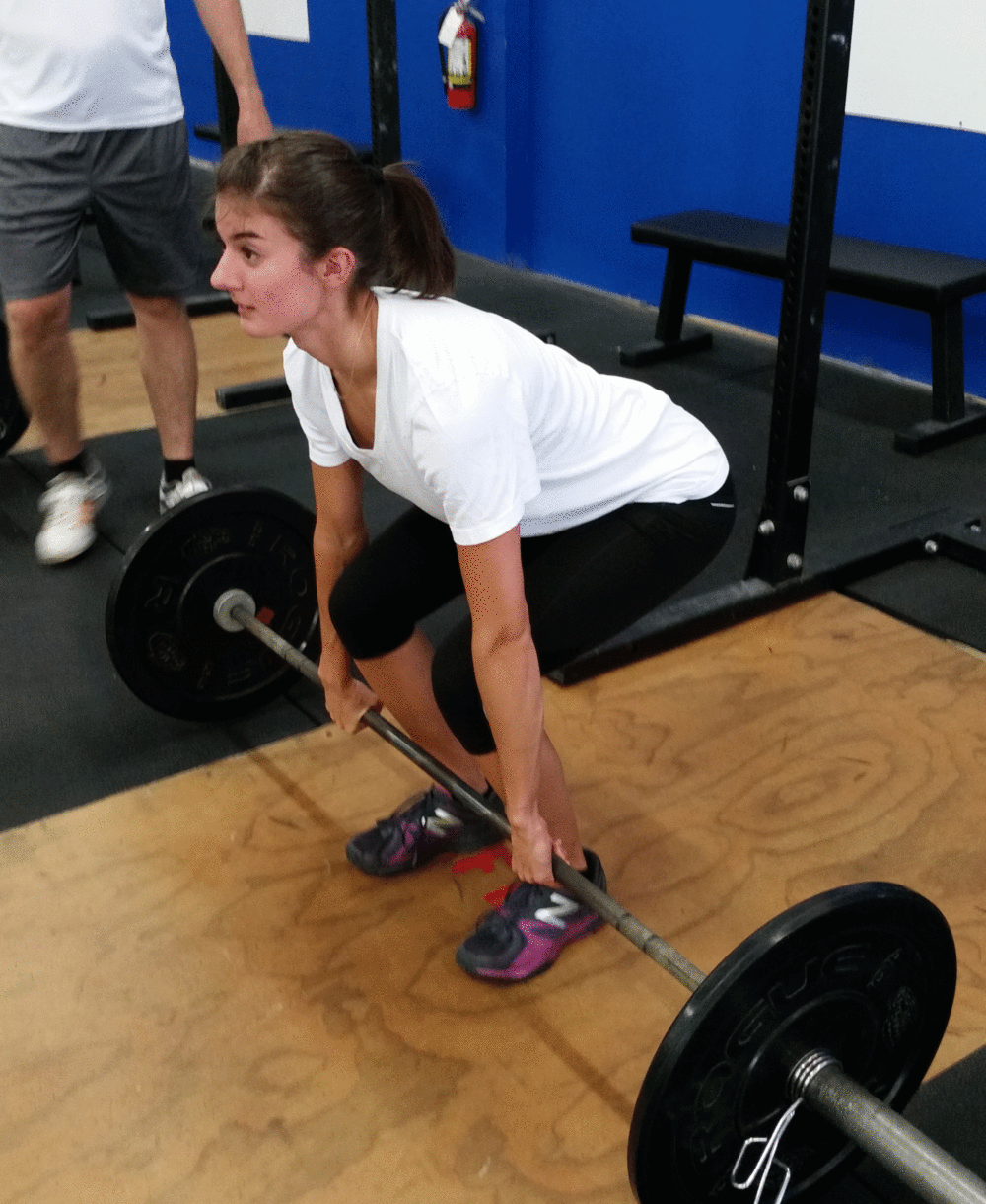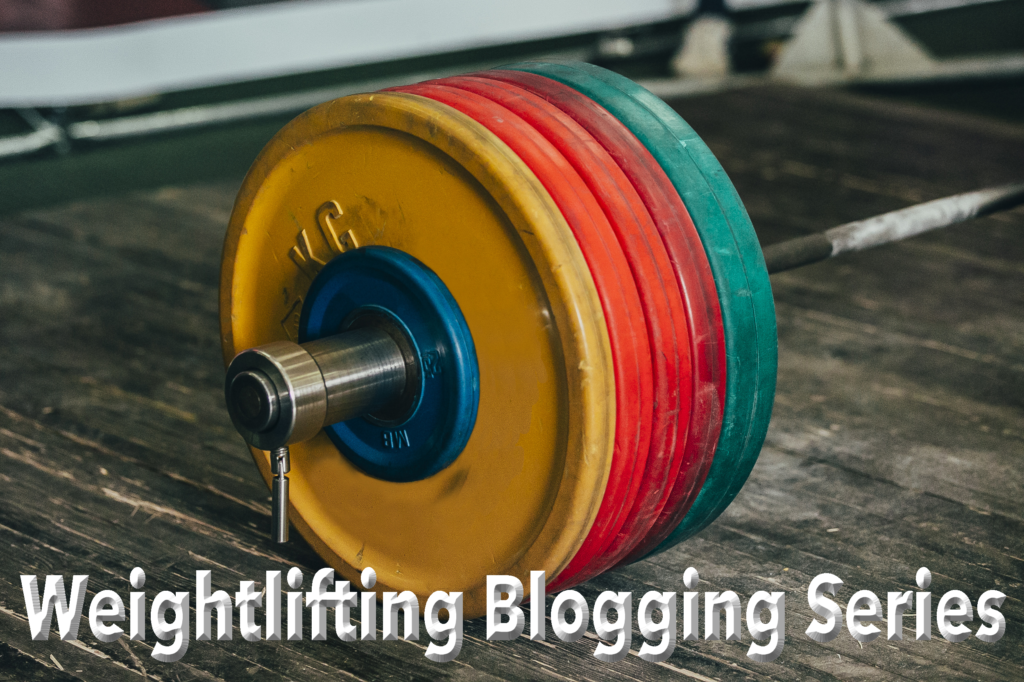 Welcome back to the realm of power cleaning! Power cleans are a very technically advanced lift that can help an athlete gain strength, speed, and coordination. In my last post, I discussed the importance of dynamic flexibility in the setup of the clean, which sets the tone for the entire lift. Here’s a recap of what a good setup looks like:
Welcome back to the realm of power cleaning! Power cleans are a very technically advanced lift that can help an athlete gain strength, speed, and coordination. In my last post, I discussed the importance of dynamic flexibility in the setup of the clean, which sets the tone for the entire lift. Here’s a recap of what a good setup looks like:
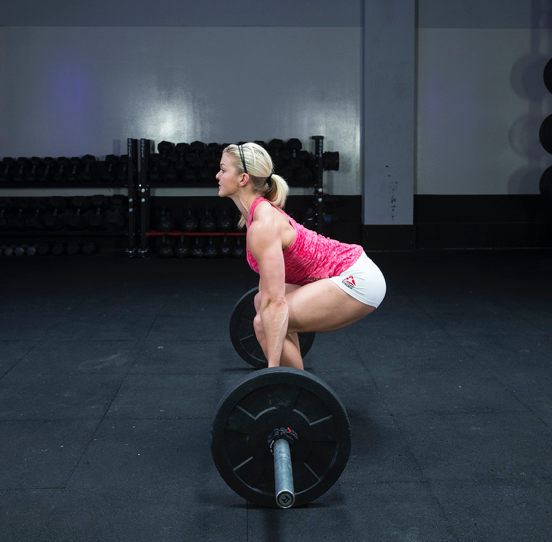
- Back is neutral or slightly arched
- Scapulae are depressed and retracted (low and close together)
- Chest is held up and out
- Head is in line with the vertebral column or angled slightly upward
- Shoulders are over the bar
In this post, I will get into detail about the rest of the lift, and the different assistant exercises that can help prepare athletes to clean correctly and safely. Remember, the more technically correct the lift is, the more efficient it is, and the athlete can lift more weight.
There are four basic parts of the power clean: the setup, the first pull, the second pull, and the catch. We have already discussed the setup, so let’s dive into the first pull:
-
The first pull: this part of the movement brings the bar off the floor to the midthigh. The basic components include:
- Lifting the bar from the floor using hips and knees
- Keeping the torso-to-floor angle constant (i.e. don’t let the hips rise before the shoulders)
- Maintaining a neutral spine, with elbows extended and shoulders slightly ahead of the bar
- Keeping the bar as close to the shins as possible
*From here, we have a minor “transitional phase” that settles the weight onto the midfoot and heel, so that the athlete does not feel like they are going to topple forward.
-
THEN, there’s the second pull, which brings the bar up to chest height:
- Keeping the bar as close to the body as possible, rapidly extend the hips, knees, and ankles (what we like to call triple extension)
- Once triple extension is reached, the shoulders should be shrugged quickly
- The elbows should remain extended up until the highest point of the shoulder shrug, then they should rapidly flex to bring the bar to about chest height
- NOTE ABOUT POSITIONING: During this phase, the torso is relatively straight or slightly hyper-extended; it is normal for the feet to leave the ground as well.
-
The catch immediately follows the second pull:
- Pull the body around the bar and rotate the arms around and under (elbows make a sort of C shape)
- At the same time, hips and knees should flex to bring the shoulders about level with the bar
- Once this position is achieved, the bar can be loaded on the anterior deltoids (front of the shoulder) with upper arms parallel to the floor
BOOM. Power Clean.

It’s a little awkward to break it into phases when everything occurs on a continuum, however, it would be unethical to try to get a novice lifter to attempt a power clean at their first workout. This is where assistant exercises come in handy; we can train specific lifts in order to cognitively and muscularly prepare athletes for this complex lift.
- The first pull: I mentioned that the first pull brings the barbell up to about mid thigh, and that there is a transition phase to re-center the athlete’s weight. Sound familiar? YES! It IS a Romanian dead-lift! Romanian dead-lifts are a great exercise to strengthen hamstrings and glutes, as well as core stability. In a workshop with Coach Morland, the other bloggers and I learned a technique from Leo Totten’s training seminar on Olympic lifts: the three gear clean dead-lift. This lift begins with the power clean set up, however as the athlete raises the bar to the mid thigh, they make three stops. One below the knee, one above the knee, and the third at the middle or upper-third of the thigh. By pausing in these three places, athletes can focus on keeping knees above the ankles, holding the spine in a neutral position, and engaging the hamstrings to keep the hips lower than the shoulders. From experience, this lift is TOUGH, but is extremely helpful with proper muscle engagement and body positioning. Here’s a sequence of Sean Cowick performing the 3-gear clean dead-lift:
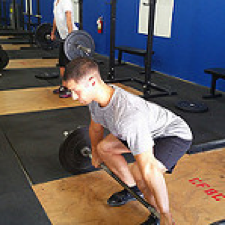
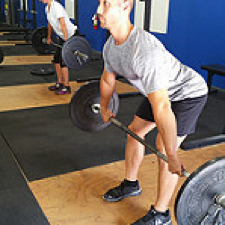
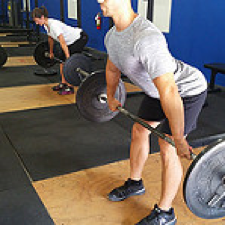
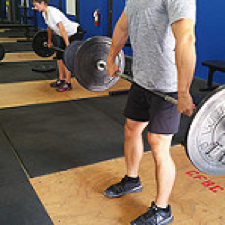
- The second pull: For improving on quickness and strength to get the bar to chest height, some assistant exercises include shrugs, upright rows, and, if you want to get fancy, and RDL-shrug-calf raise. Shrugging helps train the trapezius muscles to contract, while the arms stay extended and the lats stretch out a little. Practicing shrugs with help with muscle strength, as well as power-clean timing as the athlete waits for the shoulders to reach the highest point before flexing at the elbows. Speaking of elbow flexion, let’s move on to upright rows! Upright rows coordinate the traps, delts, and biceps to yank the bar upward. They are a great exercise to assess lat flexibility improvement, as well as teach control—I’ve seen many-a-lifter knock themselves in the chin with a powerful second pull (myself included). Thirdly, if your athlete struggles with upper and lower body coordination, the RDL-shrug-calf raise is wonderful practice. It’s basically the first pull through the transition. Starting with a tight core and neutral spine, the athlete bends downward and pulls up relatively quickly all the way onto the toes with a shoulder shrug. Feel free to turn that shrug into an upright row to complete the second phase.
- The catch: Possibly one of the most complex parts of the lift. If the weight is too light, the athlete may compensate with the upper body; if it’s too heavy, the athlete won’t be able to both pull the bar up and move under it quickly enough to catch it. Choosing the proper weight and training the right timing are KEY! A great exercise to practice technique on elbow and arm motion is the dumbbell or kettle bell clean. Starting from a quarter squat, the athlete rapidly transitions to triple extension of the lower extremity, simultaneously rowing the weight to shoulder height and swinging the elbow around and under the weight. The hand with the weight should end up just in front of or outside of the shoulder. This can be practiced on one or both sides of the body at a time. Another skill to prepare for power cleans is the front squat. Athletes should be able to maintain body positioning through the entire range of motion in the front squat, ensuring that they can safely catch weight at just about any height, or at least absorb the catch as low as needed.
Coaches, the power clean is an AMAZING lift (but you already knew that). Be sure that your athletes are well trained in the underlying assistant exercises of the lift before attempting or adding weight to their power clean. This lift is total body strength and power, so it should be trained probably no more than twice in one week, unless an extra day is added for technique (very light weight). Athletes, listen to your coaches (but you already do that ;)). Understand that steps are taken to keep you safe, and that improving on these assistant exercises will help you become stronger and faster in your power clean technique and volume load. Everyone, keep working hard, and use your power clean training to function better in your sport, activity, and daily life. Mastery in the weight room can lead to success outside of the weight room.
Sources:
Haff, Greg, and N. Triplett Travis. “Power Clean.” Essentials of Strength Training and Conditioning. 4th ed. N.p.: National Strength and Conditioning Association, 2016. 404-05. Print.
Images from Google and Morland Strength’s Flickr album.
What do you think about the Weightlifting Blogging Series? Could you add a comment or question for Coach Blaser below? Our team of bloggers would like to know your feedback. When you submit a comment our goal is to post it within 24 hours. Thanks for your feedback!
“The views, opinions, and judgments expressed in this message are solely those of the authors and peer reviewers. This content has been reviewed by a team of contributors but not approved by any other outside entity including the Roman Catholic Diocese of Raleigh.”

